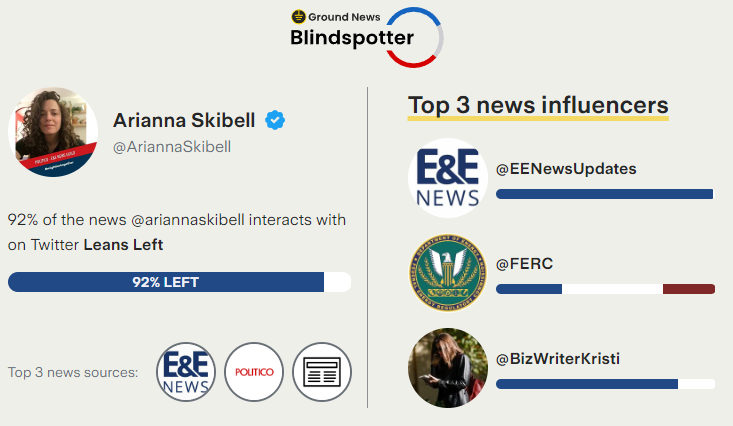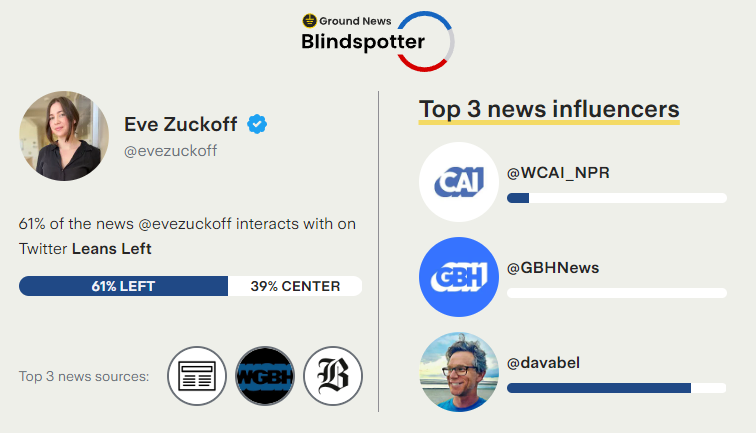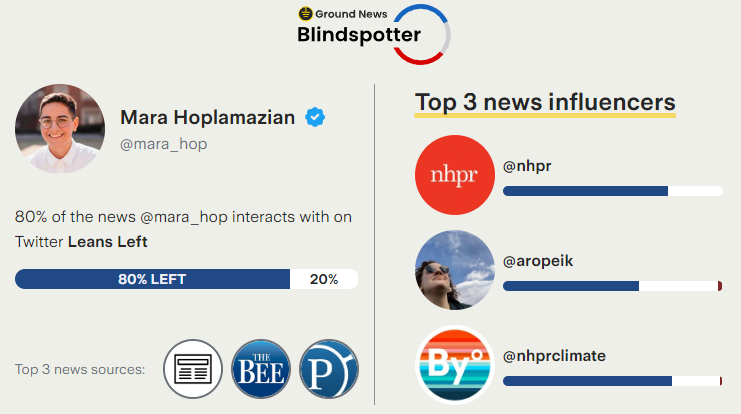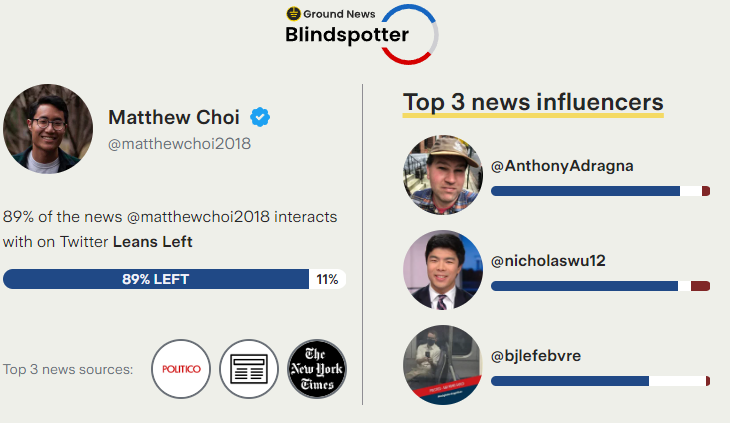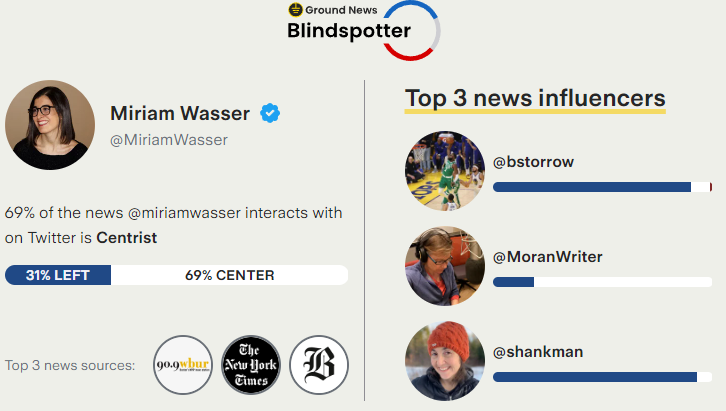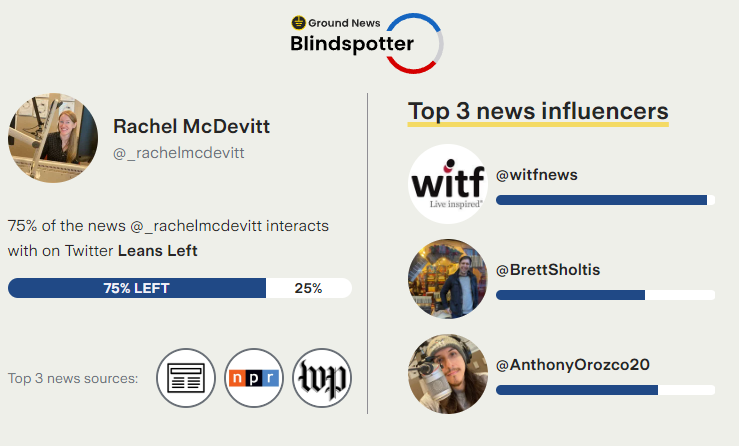Institutionalized Disconfirmation
Columbia SIPA
This week I learned that my application to Columbia SIPA’s Energy Journalism Initiative (EJI) was rejected. For those of you who have no idea what the EJI program is, here is Columbia’s description.
Preference is given to journalists with 5 or fewer years of experience on the beat. That’s me! I won’t lie, I was looking forward to this program. What went wrong? My suspicion is Columbia, like many others, does not actually value diversity. And I will say it - I believe I was the best possible candidate for this program, without question.
So, I took the time to review their current and former cohorts and learned a lot from the process.
METHOD
I chose to utilize Ground News, which is a platform that makes it easy to compare news sources, read between the lines of media bias and break free from algorithms. Over the past decade, online news and ad-driven algorithms have made it profitable for news outlets to embrace a position on the bias spectrum to target specific consumers. https://ground.news/about
I then manually found and entered each of the 40 current and former Energy Journalism Initiative cohorts’ twitter profiles through Ground News to rank their ideological scores - left, right, and center - to determine what the collective makeup is of the Columbia SIPA admissions program.
Results
To start, not a single one of the 40 participants has energy experience! By contrast, I have built successful businesses in both the power markets and upstream energy sectors. More problematic is the scarce evidence that ideological diversity (inclusion) exists.
The 2021 Cohort
Nearly every one of the 2021 alumni was a writer for a news outlet that is rated Left by Ground News, and each is personally heavily engaged with only one side of the ideological spectrum.
2021 cohort
On average, 72% of the news they interacted with was ideologically Left and a mere 3% on the Right.
The 2022 Cohort
The 2022 cohort looks eerily similar to the 2021 cohort; heavily left, with little influence on the right.
NO CONCEPT OF REALITY
Many of the cohortS, like Elizabeth Weise of USA Today, barely registered interaction with anything that was considered even Centrist much less ideologically Right. Wonder how that might influence her journalistic integrity? A recent article of hers reads A ‘dystopian’ hellscape? That’s what the West faces from climate change even though that’s a severe departure from the literature contained in the United Nations’ climate science reports and her list of other articles is more of the same.
In fact, seven (7) members - three members of the 2021 cohort and four members of the 2022 cohort - actually registered 0%, LITERALLY ZERO! Five out of the seven of them get the Twitter verified blue checkmark and six out of the seven are women (can I say that anymore, or is biology no longer en vogue?).
It begged the question for me - is Columbia SIPA guilty of Ideological Racism?
The Coddling of the American Mind
It just so happened that I have been reading The Coddling of the American Mind by Greg Lukianoff and Jonathan Haidt which I’ll now lean heavily into from Chapter 5 – Witch Hunts. Haidt and Lukianoff, who were lauded for their research in the Atlantic and referenced by President Obama, write too perfectly for me to add a single word. I highly recommend their book to you as well.
“The authors, both of whom are liberal academics—almost a tautology on today’s campuses—do a great job of showing how ‘safetyism’ is cramping young minds. Students are treated like candles, which can be extinguished by a puff of wind. The goal of a Socratic education should be to turn them into fires, which thrive on the wind. Instead, they are sheltered from anything that could cause offence. . . . Their advice is sound. Their book is excellent. Liberal parents, in particular, should read it.” – Edward Luce, Financial Times The Liberalization of our Universities
Lukianoff, Greg. The Coddling of the American Mind (p. 110). Penguin Publishing Group. Kindle Edition.
“The figure above shows the percentage of professors (across all fields) who self-identified on a survey as being on the left (in the top line), the right (bottom line) or “middle of the road” (middle line). The left-to-right ratio in the early 1990s was around two to one. The few studies we have that go back to the mid-twentieth century generally also show that professors leaned to the left, or voted for Democrats, but not by a very lopsided margin.42 Things began to change rapidly, however, in the late 1990s. That’s when the professors from the Greatest Generation began to retire, to be replaced by members of the Baby Boom generation. By 2011, the ratio had reached five to one. The Greatest Generation professors were predominantly white men who had fought in World War II, and then got a boost into higher education from legislation designed to help them in the postwar period. That wave of scholars included many Republicans and many conservatives (Lukianoff, Greg. The Coddling of the American Mind).”
In certain fields, like social justice, that ratio went from two to one in the 1930s to nearly seventeen to one by 2016 (Fields, Jon). The ratios in other core fields like humanities and social sciences are nearly all above ten to one (Duarte et al, 2015, and Langbert, Quain, & Klein, 2016). And the imbalance is larger at more prestigious universities and in New England (Langbert et al, 2016).
“The only field among all of the humanities and social sciences that is known to have enough political diversity to allow for institutionalized disconfirmation is economics, where the left-to-right ratio found in a study of the voter registrations of professors was a comparatively low four to one (Langbert et al, 2016).”
In fact, research since World War II has consistently found such liberalization of our universities (e.g., Klein and Stern, 2005; Klein and Stern, 2009; Gross & Simmons, 2007; Honeycutt & Freberg, 2017; McClintock, Spaulding, & Turner, 1965; Rothman, Lichter, & Nevitte, 2005; Buss & von Hippel, 2018). Even College Boards are heavily donating to Democrat Candidates.
Institutionalized Disconfirmation Lacking for Faculty & Students
Increasingly, researchers are raising concerns over ideological homogeneity that could lead to flawed research due to a lack of appropriate institutionalized disconfirmation.
“The loss of political diversity among professors, particularly in fields that deal with politicized content, can undermine the quality and rigor of scholarly research. Six social scientists (including Jon) wrote an academic article in 2015 that explains how. For example, when a field lacks political diversity, researchers tend to congregate around questions and research methods that generally confirm their shared narrative, while ignoring questions and methods that don’t offer such support.
The loss of political diversity among the faculty has negative consequences for students, too, in three ways. First, there’s the problem that many college students have little or no exposure to professors from half of the political spectrum.48 Many students graduate with an inaccurate understanding of conservatives, politics, and much of the United States. Three days after Donald Trump’s widely unexpected electoral victory, the editors of Harvard’s main student newspaper made exactly this case in an editorial invoking Harvard’s motto, Veritas—the Latin word for “truth”—calling on the administration to give them more political diversity:
The pursuit of “Veritas” which undergirds our intellectual life demands not only that each member of our community be able to debate politics freely, but also that we attend to the multitude of political views that exist in our nation. Stifling this discussion on campus is a disservice to our peers in the campus political minority, and to our own educational growth.
In short, they are not taking appropriate measures to counter their own confirmation biases.
To compound this second problem, during the same period in which the faculty were becoming more politically homogeneous, so were the students. Surveys of incoming freshmen conducted by the Higher Education Research Institute show that roughly 20% of incoming students identify as conservative, and that figure has held steady since the early 1980s. Self-described “moderates” made up roughly half of all incoming students in the 1980s and 1990s, but that figure has been dropping since the early 2000s—it’s now in the low forties—as the percentage of progressives (self-described “liberals”) rises into the high 30s. The shift has accelerated since 2012.”
Witch Hunts
“We are saying that viewpoint diversity is necessary for the development of critical thinking, while viewpoint homogeneity (whether on the left or the right) leaves a community vulnerable to groupthink and orthodoxy. If both the faculty and the students have been losing moderates and gaining progressives since the 1990s, and if this shift among students has accelerated since 2012, then we would expect to see some changes in the culture and social dynamics of American universities, especially after 2012. This is the third problem. It is the Durkheimian problem. It is the risk that some academic communities—particularly those in the most progressive parts of the country—may attain such high levels of political homogeneity and solidarity that they undergo a phase change, taking on properties of a collective entity that are antithetical to the normal aims of a university. A collective entity mobilized for action is more likely to enforce political orthodoxy and less likely to tolerate challenges to its key ideological beliefs. Politically homogeneous communities are more susceptible to witch hunts, particularly when they feel threatened from outside.”
The Peer-Review Process is Broken
The liberalization has also found itself present in everyday life where your surgeon is likely a Republican and your psychologist is likely a Democrat. Or, as FiveThirtyEight writes, a survey of more than 500 social and personality psychologists published in 2012 found that only 6 percent identified as conservative overall, though there was more diversity on economic and foreign policy issues. The survey also found that 37.5 percent of respondents expressed a willingness to discriminate against conservative colleagues when making hiring decisions.
Climate is one such field of study that has shown to be increasingly susceptible to homogenous thinking. We’ve already seen attempted witch hunts against Dr. Steven Koonin, Bjorn Lomborg, Michael Moore, and Michael Shellenberger – all of which are registered Democrats – for breaking from the homogenous groupthink emulating from the United Nations Summary for Policymakers. People on the Left are not safe from people on the Left.
Thus, the peer-review process has been marginalized by such a dramatic lack of ideological diversity. The leading Universities are worse than the average. Stanford University, for example, has a ratio of 30:1 (Democrat to Republican); Columbia (45:1); Harvard (96:1); Duke (253:0); Brown (113:1); Yale (352:0); Penn State (536:0); and Georgetown (555:0). Source: NAS.
The entire peer-review process, that is predicated upon Institutionalized Disconfirmation, is thus no longer reliable. Steven Koonin, Obama’s Undersecretary of Energy and former head of renewables for Beyond Petroleum, is ostracized for suggesting a Red Team Review of the United Nations AR5 and AR6, much less the domestic agencies (Unsettled, 2021). This fundamental shift possibly explains The Politics of Climate in Pew Research’s findings.
Conclusion
My experience this week with Columbia SIPA seems to confirm that when a Centrist attempts to engage with the Left, that person is met by a closed door. No matter their expertise, experience, or intelligence. To say these trends are worrisome is an understatement. To warn that the lack of institutional disconfirmation is an epidemic that’s marginalized western Universities and turned the peer-review process into an echo chamber, putting science in peril, is prudent.
The data suggests that Columbia SIPA is very likely guilty of Ideological Racism.
This article was updated on July 19, 2022 to include the data of the 2022 Columbia SIPA EJI cohort.






